Winterize Your Intex Pool: Essential Steps for Cold Weather Prep
September 23th, 2024
September 23th, 2024
As the days grow shorter and the chill begins to creep into the air, preparing your Intex pool for the winter months is a task that deserves both attention and care. Dismissing this crucial process can lead to costly repairs or even the loss of your beloved backyard reprieve. The art of winterizing your pool is akin to tucking it in for a long slumber, ensuring it stays safe until the sun returns to its full glory.
Many pool owners might think closing down their pool is as simple as pulling a cover over the surface and calling it a day. However, those who've faced the heartache of burst pipes and murky water come spring know otherwise. Understanding the nuances that come with this process not only saves you from potential headaches but also maintains the longevity of your pool.
Reflecting on personal experiences, I recall the first year I neglected to properly winterize my pool. The issues that emerged with the first thaw were a harsh lesson. Since then, I've learned that a methodical approach, involving a series of steps, is the key to a worry-free winter. By following a precise plan, from balancing chemicals to ensuring the right cover fit, you can rest assured that when summer returns, your pool will be ready to welcome you back with open arms. This guide will unfold the essential steps to safeguard your Intex pool, transforming the daunting task into a manageable, even rewarding, ritual.
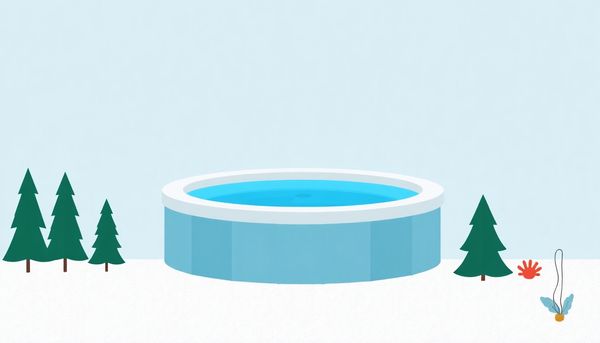
When the leaves begin to fall and the air turns crisp, thoughts naturally shift from poolside lounging to cozy evenings by the fire. Yet, as the seasons change, so too must your approach to pool care—particularly for that delicate Intex pool liner. This thin barrier stands as the only defense against unexpected tears and punctures, which can easily spell the end of poolside fun next summer.
The steps to protect your pool liner may seem straightforward, but they hold the key to preserving both your pool and your peace of mind. Begin by ensuring the liner is impeccably clean before storage. Any lingering debris or moisture can lead to mold or mildew, quietly wreaking havoc during the long winter months. A gentle scrub with a soft cloth and mild cleanser will do the trick, followed by thorough rinsing and drying.
Once dry, a light dusting of talcum powder can prevent the liner from sticking to itself when folded. Folding the liner is akin to a delicate art form—much like tackling a fitted sheet. Start by folding it into manageable squares, ensuring no sharp creases form, which might weaken the material.
Finally, store the liner in a climate-controlled area, away from any potential hazards like rodents or fluctuating temperatures. This extra care may seem tedious, but it's a worthy investment. With these steps, you'll embrace each new pool season with the satisfaction of a job well done, ready to dive back in without a hitch.
As the days grow shorter and the chill begins to creep in, the time arrives to prepare your Intex pool for its winter hibernation. This seasonal ritual isn't just about ticking off a to-do list; it's about preserving your investment so that it’s ready to provide endless joy when summer returns. Unlike the steadfast above-ground pools, Intex models demand a gentler touch to endure the winter months unscathed.
First, gather all the gear you'll need. The owner's manual becomes your trusty guide, ensuring you're not left scratching your head mid-process. If it's vanished into the abyss of garage clutter, a quick online search will retrieve it. Remember, preparation isn’t just about tools but also timing. Begin the process well ahead of the first frost to avoid the panic of a looming cold snap.
Next, focus on cleanliness. Meticulously scrub the pool walls and vacuum the base, ensuring no debris remains. This step prevents nasty surprises when you unveil your pool in the spring. As the water drains through your garden hose—an exercise in patience rather than speed—keep an eye on the progress.
Finally, dismantle and dry each component thoroughly. Whether it's the meticulously folded liner or the neatly stacked frame pieces, each item needs a dry, safe haven until warmer days beckon. By giving your Intex pool the care it deserves now, you ensure a seamless and stress-free setup when summer sunlight calls you back to the water’s edge.
Draining and disassembling your Intex pool isn't just a task; it's a rite of passage from summer splashes to winter coziness. Start by ensuring all power sources are safely disconnected—no one wants an unexpected jolt. Remove accessories like skimmers and ladders, cleaning and drying them meticulously before storing. Think of this as tucking away summer memories in a dry, secure place.
Next, tackle the water. Draining an Intex pool requires patience. Use a garden hose attached to the drain connector, and make sure the hose's other end is positioned away from your home's foundation—water can be surprisingly destructive. As the water gradually ebbs away, this is your cue to begin cleaning. Use a mild cleaner and a soft cloth for the pool walls, avoiding harsh chemicals that could damage the liner.
Keep an eye on the water level. Once it's low enough, gently lift the pool's edge to help drain the remaining droplets. Don't forget to remove the drain hose and secure the pool's internal and external plugs. If your pool includes a frame, reverse the assembly steps carefully, ensuring each piece is meticulously cleaned and dried before storage.
Finally, fold the liner with the precision of an expert, or as close as you can get—no Olympic medals required. A sprinkle of talcum powder or cornstarch aids in absorbing any moisture, preventing the liner from sticking. As you pack everything away, remember: by taking the time now, you're ensuring next summer's fun.
Winter’s icy grip can spell disaster for Intex pools if not properly prepared. The delicate materials that make these pools easy to set up also mean they’re particularly susceptible to ice damage. The pooling water left to freeze can stretch, crack, and ultimately ruin the liner, turning a once-fun summer oasis into a winter headache.
Draining and disassembling your pool before temperatures plunge is your best defense. Imagine waiting for those freezing nights, only to find your pool liner split wide open by the expanding ice. It’s not a pretty sight and certainly not a quick fix. Taking the time to dismantle and store your pool when the weather is still mild ensures it stays safe until next season’s sunny days return.
For those in warmer climates where winters are mild, the situation is less dire, but precautions are still necessary. Maintaining balanced water chemistry with a pH between 7.4 and 7.6 and using winterizing chemicals can fend off unwanted algae blooms and bacteria. Still, the risk of sudden cold snaps makes it prudent to be prepared to drain and store the pool quickly if needed.
By planning ahead and acting decisively, you save yourself from the icy nightmare of a damaged pool. Embrace the effort now, and you'll thank yourself come summer when you’re back to lounging poolside without a worry in the world.
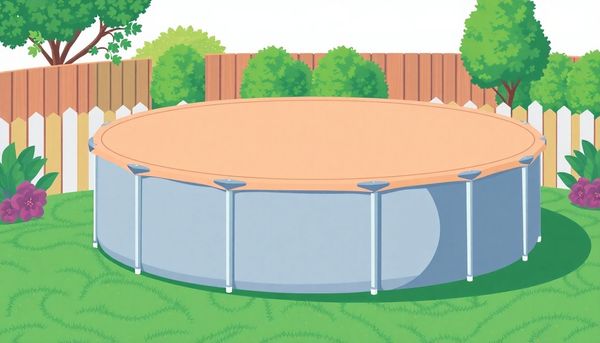
As the sun dips lower and the air begins to bite, it's time to give your Intex pool the attention it deserves before the chill sets in. The process of draining and storing your pool properly is crucial—not just for the longevity of the pool, but for easing your mind as winter advances. The key here is patience, as the task might stretch over a few days but yields a payoff in preserving your summer oasis.
First things first, power down. Disconnect all power sources to avoid any mishaps. Then, gently remove any accessories like skimmers or ladders, clean them thoroughly, and let them dry. Aim to store these in a dry, safe spot to protect them from wear and tear over the colder months.
To drain your pool, locate the drain connector and remember to attach your garden hose securely. Direct the hose away from your house to prevent potential damage or flooding. It's a slow process, especially with larger pools, so check the setup occasionally to ensure the hose stays put and water flows smoothly.
Once the draining wraps up, it's time for a cleansing ritual. Wipe down the pool lining with a mild cleaner, making sure it's rid of any residue that might fester over time. Let the liner dry completely, preventing mold or mildew, and sprinkle some talcum powder or cornstarch if necessary.
Storing your pool parts indoors is essential. They need a dry, warm haven where the frost can't reach them. Keep these parts together to avoid a future game of hide-and-seek when spring rolls around. By doing this, you’re not just putting away a pool; you’re safeguarding a slice of next summer’s joy.
As the summer sun retreats and a winter chill begins to creep in, it's time to transform your Intex pool from a splashing summer hub to a hibernating winter resident. Unlike conventional pools, Intex models require a touch more finesse due to their inflatable nature and lightweight materials, vulnerable to the harshness of winter's icy grip. Proper preparation can be the difference between a pool that joyfully greets you come spring and one that needs replacing.
First, take a day to thoroughly clean your pool. Remove any debris and vacuum the pool’s surfaces. Trust me, you don’t want to discover a murky surprise when you reopen it in warmer months. This is also a perfect moment to inspect the pool's lining for any damages that might worsen when left unaddressed.
Next, focus on draining the pool. This task tests patience, as the water must slowly leave through a garden hose. Allocate a couple of days for this step, especially if you have a larger model, and ensure the process is planned well ahead of dropping temperatures. Once drained, it’s crucial to dismantle the pool, carefully clean and dry all the components, and store them in a place devoid of freezing conditions.
Lastly, for those in milder climates who opt to keep their pool assembled, ensure you balance the water chemistry meticulously to prevent algae and bacteria growth. Winterizing chemicals tailored for your specific climate can provide peace of mind throughout the cold season. With these steps, your pool will be safely cocooned, awaiting the promise of next summer's warmth.
Cleaning and draining your Intex pool marks the beginning of its winter hibernation. Begin by disconnecting all power sources—safety first! Next, detach and clean any accessories like ladders or skimmers. Stow them safely after drying. If your strainer grid is grimy, consider replacing it for a fresh start next season.
Now, arm yourself with a vacuum and tackle the pool’s floor and walls. A sparkling clean surface prevents unpleasant surprises when you unveil it come spring. Reach out to your local authorities to understand the proper procedure for water disposal. Environmental and legal considerations are key here; you don’t want to inadvertently harm your property or the surroundings.
For draining, dig out the trusty garden hose and drain connector. These tools are your allies in this endeavor, helping you empty the pool efficiently. Before diving into the draining process, make sure the hose directs water away from structures to prevent any damage. Secure the hose to the drain connector, and with one firm push into the valve, witness the slow and steady dance of water flowing out.
Patience is your friend as you wait for the pool to fully drain, occasionally checking that all connections hold firm. As the water level drops, you can get a little proactive scrubbing done on the walls with a mild cleaner and soft cloth. Avoid harsh chemicals; they can wreak havoc on your pool’s delicate lining. With the pool finally empty, you’re a step closer to wrapping up your winter prep and reclaiming your yard for the season’s adventures.
When the final splash of summer echoes away, it's time to turn your attention to safeguarding your Intex pool components. This task, often underestimated, is as crucial as winterizing the pool itself. Each piece, whether big or small, plays a vital role in ensuring your pool is ready to dive into when the sun returns.
Begin by diligently cleaning and drying every component. This includes pumps, hoses, and any ladders or skimmers you’ve been using. Leaving even a hint of moisture can lead to mold or corrosion, so be thorough. For instance, when I first winterized my own pool, I discovered a forgotten damp hose in spring that had turned home to mildew—a lesson learned the hard way.
Next, choose a storage space that offers protection from the elements. A dry, temperate spot such as a basement or a garage is ideal. Avoid spots where freezing temperatures might creep in, as these could cause materials to become brittle or cracked. Labeling boxes or using storage bins for smaller parts can save you a headache when pool season rolls around again.
For those who embrace organization, grouping similar items together is your best bet. Pool tools in one bin, frame pieces in another—it’s like a puzzle that fits neatly back into place after winter passes. Keeping everything in its designated spot ensures you'll spend less time searching for that elusive connector next spring.
Ultimately, caring for your Intex pool components now not only preserves their lifespan but also guarantees you a smoother setup when warm weather whispers its return.
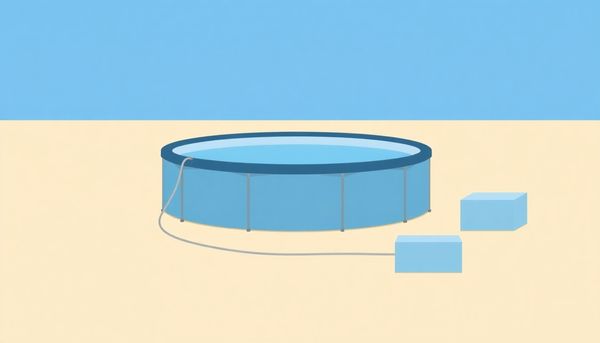
When the leaves start to fall and the air turns crisp, it's time to think about putting your pool accessories to bed for the winter. Cleaning and disassembling these vital components is as crucial as preparing your pool itself. Consider it a bit like tidying up your camping gear after a summer of adventure — everything needs a thorough check and a proper place to hibernate until next season.
Start by gathering your skimmer, ladder, and any other detachable accessories. Give each part a good rinse with a hose to remove any lingering chlorine or debris. For stubborn spots, a gentle scrub with a soft brush and mild soap can do wonders. Once clean, allow them to air dry completely to prevent mold growth during storage.
Next, inspect your strainer grids and remove them if they’re clogged or grimy. Sometimes, a simple rinse suffices, but if the gunk persists, consider replacing these inexpensive parts for fresh ones next season. It's also wise to deflate any inflatable accessories slightly, just enough to avoid stretching the material over time.
Store all your clean and dry accessories in a cool, dry place. A garage shelf or storage bin works perfectly — just make sure everything is easy to find when the weather turns warm again. This not only extends the life of your equipment but also simplifies setup come spring. Happy organizing, and here's to a cozy winter with everything in its rightful place!
As autumn's chill sets in, pools transform from summer sanctuaries to potential winter woes. Prepping your Intex pool for the cold months is essential to preserve its integrity. First, gather your supplies, starting with the owner's manual, which provides crucial guidance tailored to your model. Misplaced yours? Intex’s website has got you covered with downloadable versions.
Before winter truly takes hold, a thorough cleaning is paramount. Remove all accessories like ladders and skimmers, ensuring they are clean and dry before storing them away. A vacuum session for the pool is wise; no one wants to discover a murky mess come spring. If you've decided to keep the water in, balance the pool’s chemistry with a pH between 7.4 and 7.6, and total alkalinity in the 100-150 ppm range, adding a winter algaecide as a preventative measure.
For those in colder climes, draining is a must to avoid ice damage. Carefully connect your garden hose to the drain connector and ensure water flows away from the house. While it drains, start washing the pool walls with a mild cleaner. Remember, patience pays off here; rushing can lead to unwanted damage.
Finally, once drained, fold the liner with care, akin to tackling a fitted sheet for the first time. Store all components in a dry, indoor space, safeguarding them from freezing temperatures. With this diligence, your Intex pool will be ready to spring back to life when warmth returns.
As the colder months approach, the task of draining and storing your Intex pool becomes a crucial step in ensuring its longevity. While it may feel like a demanding task, think of it as an investment in next summer’s fun. Your first mission is to safely remove all water from the pool. This process isn't only about turning a valve; it's about patience. Attach your garden hose to the pool’s drain connector, and make sure the outflow is directed well away from any structures to prevent water damage. If your local regulations require specific measures for disposing of the water, familiarize yourself with these to avoid penalties.
Once the water level falls, sediment and debris will be more visible. Now is the perfect time to scrub down the sides with a mild cleaner, but be gentle—harsh chemicals or abrasive tools can damage the liner. For those with inflatable parts, ensure they are thoroughly cleaned and dried before storage.
The pool liner should be completely dry before folding, to avoid mildew. A bit of talcum powder can help absorb any remaining moisture and prevent sticking. If you’re anything like me, folding a large circle into a neat square might seem like a daunting task. Just try your best to compact it without haste, and store it in a cool, dry place.
Remember, the goal is to safeguard your investment from the harshness of winter. With thoughtful preparation now, you’ll be diving back into your pool in no time once spring rolls around.
When the chill in the air signals it’s time to bid your Intex pool farewell for the season, don't overlook the accessories that have served you well all summer. The skimmers, ladders, and various floats may not be as large as the pool itself, but they require their own care to ensure they last through the winter.
Begin by gathering all the pool accessories, including the skimmer, ladder, and any floats or toys. If you've got a family like mine, there's always that one forgotten noodle or diving ring at the bottom of the pool! Thoroughly rinse each item with fresh water to wash away any lingering chlorine or salt, which can corrode surfaces over time. A gentle, non-abrasive cleaner can help remove stubborn grime, while a soft brush can reach into grooves and corners.
Once cleaned, allow these items to air dry completely. Moisture left on accessories is the enemy, as it can lead to mold or mildew. If you’ve ever found a forgotten damp item in storage, you know the unpleasant surprise it can bring. After drying, store everything in a cool, dry place. A dedicated corner in your garage or a storage bin in your basement works wonders.
Remember, carefully storing these items now means fewer surprises—and expenses—come spring. Plus, it's one less thing to think about when you're itching to jump back into the water next year!
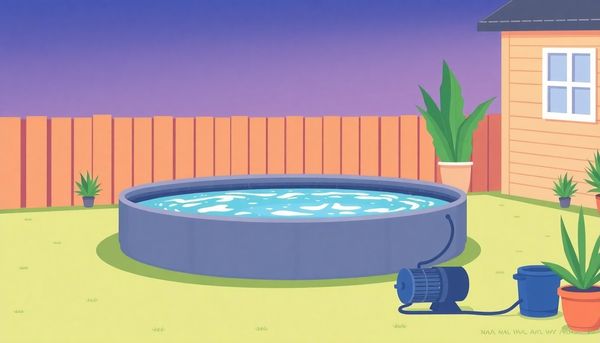
As the leaves begin to fall and the air turns crisp, preparing your Intex pool for winter means ensuring the water chemistry is just right. This step isn't merely about checking boxes; it's about safeguarding your pool's integrity while it takes its seasonal hiatus. In my own backyard, balancing water chemistry became a game-changer when I realized how much it could prevent spring algae blooms.
Start by testing your pool water meticulously. Aim for a pH level between 7.4 and 7.6; this sweet spot keeps the water stable, reducing the chances of corrosive or scaling conditions. Total alkalinity, the unsung hero of water balance, should hover between 100 to 150 parts per million (ppm). It acts as a buffer, ensuring the pH remains steady.
Once these levels are dialed in, it's time to introduce a winterizing chemical kit. This typically includes a potent shock treatment and a non-copper algaecide. The shock oxidizes organic contaminants, while the algaecide acts as a sentinel, warding off any growths that might dream of taking over during the off-season. Let these chemicals circulate thoroughly for at least a day to maximize their effectiveness.
While it might seem like an extra step in an already packed schedule, getting the water chemistry right can mean the difference between a seamless pool opening come spring and a swampy mess. It’s a small effort now that pays dividends when the weather warms up once more.
When the leaves start falling and the air gets crisp, it's time to think about preparing your Intex pool for its winter hibernation. Though it might seem like a daunting task, ensuring your pool survives the chill is worth the effort. Remember, the goal is to prevent damage from ice and freezing temperatures, which can wreak havoc on your beloved summer oasis.
First, gather your winterizing supplies, including a reliable pool cover, cleaning tools, and winterizing chemicals. The owner's manual is your friend here, providing specific instructions tailored to your pool model. If it's lost in the clutter of your garage, a quick search on the Intex website should yield a digital version.
Think of winterizing as a multi-day project. Draining your pool with a garden hose can take time, especially for larger models. Start early to avoid a last-minute rush when the first frost warning hits. While draining, be sure to direct water away from your home's foundation to prevent any structural damage.
Once your pool is empty, clean and dry all components thoroughly. Inflatable parts should be checked for leaks and deflated carefully. Sprinkle a bit of cornstarch on the liner before folding it up—this helps prevent sticking and ensures easy handling next season. Store everything in a dry, temperate place, safe from the harsh elements.
Completing this process not only protects your pool but also frees up your backyard for winter fun. So grab a rake or a sled, and enjoy the season knowing your pool is safely tucked away until summer returns.
Draining and disassembling your Intex pool is akin to putting a beloved summer companion into hibernation. This process begins with ensuring the water is crystal clear and free of any debris. Grab a skimmer and a pool vacuum to make sure nothing unwanted lingers on the surface or the walls. Your pool’s cleanliness now is a gift to your future self when it’s time to reopen.
Next, consider the environmental implications. Some municipalities have strict regulations on water disposal, so a quick check with local guidelines can prevent potential fines or drainage mishaps. Always unplug your pool from electrical sources before you proceed—safety first!
Now, it’s time for the main event: draining the pool. Locate the drain plug nestled inside your pool and leave it inserted; the water will naturally nudge it open. Secure a garden hose to the drain connector, ensuring the other end is directed well away from your house to avoid any structural mishaps. When all is ready, attach the connector to the valve, and watch as water begins its slow exodus.
As the water level decreases, take the opportunity to gently clean the pool walls with a soft cloth and mild cleaner. This is a great time to reflect on all the sunny days spent poolside while preparing your pool for its winter slumber. Once drained, ensure the pool liner is dry before folding it—an art form in itself, much like folding a fitted sheet. Store frame components and liner in a dry, secure location to ensure their readiness for next summer’s adventures.
Even as you begin the process of winterizing your Intex pool, the task of storing your equipment safely cannot be overstated. Each accessory, from the pump to the pool liner, plays a vital role in the pool’s longevity. A neighbor once remarked how his pool liner, improperly stored, ended up as more of a chew toy for mice than a water barrier come spring. Avoid such mishaps by ensuring your equipment is stored meticulously.
Start by dismantling every component, giving each a gentle but thorough cleaning. Use mild soap and warm water for the liner, pump, and hoses. Allow each piece to air dry completely to prevent mold or mildew from forming during the long winter months. My own experiment with shortcuts—like hastily drying with a towel—ended in regret, with a musty surprise the following summer. Trust me, patience here pays off.
Once clean and dry, find a dry, temperature-controlled space. Basements, garages, or even closets are ideal. Avoid any areas prone to dampness or temperature fluctuations. It’s also wise to store smaller parts, such as plugs and valves, in labeled containers or bags to avoid a frantic spring search.
Lastly, consider using talcum powder on the liner before folding. This simple step can prevent sticking and ease the unfolding process next season. With everything stored securely, you’ll thank yourself when the warm weather returns, ready to welcome a splash-ready pool back into your life.
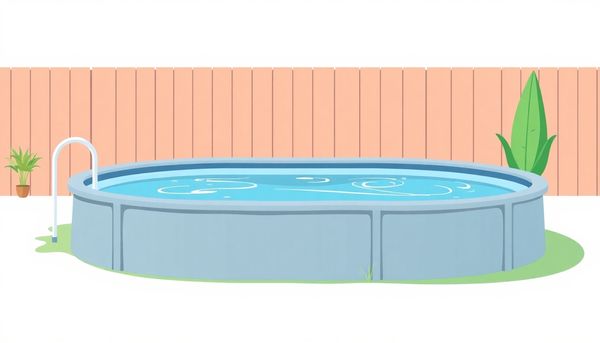
As autumn leaves begin to crunch underfoot, one crucial step in preparing an Intex pool for winter is introducing winterizing chemicals. These specially formulated solutions are not just an optional extra; they are the silent guardians that maintain the water’s quality while your pool sits unused. Neglecting this step can lead to a nasty surprise of algae blooms and bacteria colonies come springtime.
Begin with a pool shock treatment to kill off any lingering contaminants. This is like hitting a reset button for your water, ensuring it's as clean as possible before the long nap. Follow this with an algaecide—a copper-free option is often recommended for its gentler approach, reducing the risk of staining or harming your pool liner. Pool owners have often found this combination to be their secret weapon in maintaining a crystal-clear pool throughout winter.
In colder climates, incorporating a pool antifreeze in the plumbing lines is wise, preventing any chance of water expansion leading to cracks and leaks. However, remember that each pool and region might require slightly different dosages or combinations, so always double-check the compatibility with your specific Intex model and local climate conditions.
Finally, let these chemicals circulate for a full day, allowing them to spread evenly throughout the water. This step ensures that your pool not only survives the winter but emerges in the spring in the best possible condition, ready for the swimming season ahead.
As the days grow shorter and the air turns crisp, preparing your Intex pool for winter becomes an essential task. The process isn't just about protecting your investment; it's about ensuring that when the sun beckons next summer, your pool is ready with minimal fuss. First, take a moment to recall how much joy that pool brought during the sweltering days. Then channel that nostalgia into motivation for the task at hand.
Begin by giving your pool a thorough clean. This isn't just a cursory sweep; remove all debris, vacuum the sides, and scrub away any lingering algae. It’s akin to giving your pool a farewell party before it goes on hiatus. Following that, you’ll need to drain the pool. For Intex models, this means connecting your garden hose to the drain valve—a process that can take hours, so patience is key.
Once drained, apply winterizing chemicals meticulously to prevent any unwanted growth during the hibernation period. Consult your owner’s manual for specifics, as exact dosages can vary based on your pool model. Now, you’ll need to remove and store accessories like ladders and filters in a dry place. Finally, cover your pool securely to keep out leaves and debris, and remember, a pool cover is not a safety cover, so ensure the area remains secure from wandering pets or children.
Though it may seem like a chore, envision how seamless the setup will be next year. Your efforts now will ensure a smooth transition back into pool season, allowing you to dive right back into those cherished summer moments.
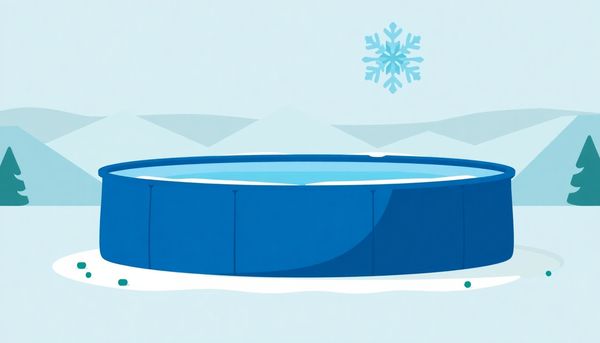
This article provided insights into maintaining your pool. Start your pool care journey today!
Want to become a pool maintenance expert? Our free Pool School course covers everything you need to know about pool care. From basic maintenance to advanced troubleshooting, you'll learn how to:
Join over 10,000 pool owners who have already transformed their pool care routine. Get started with our free Pool School course today!